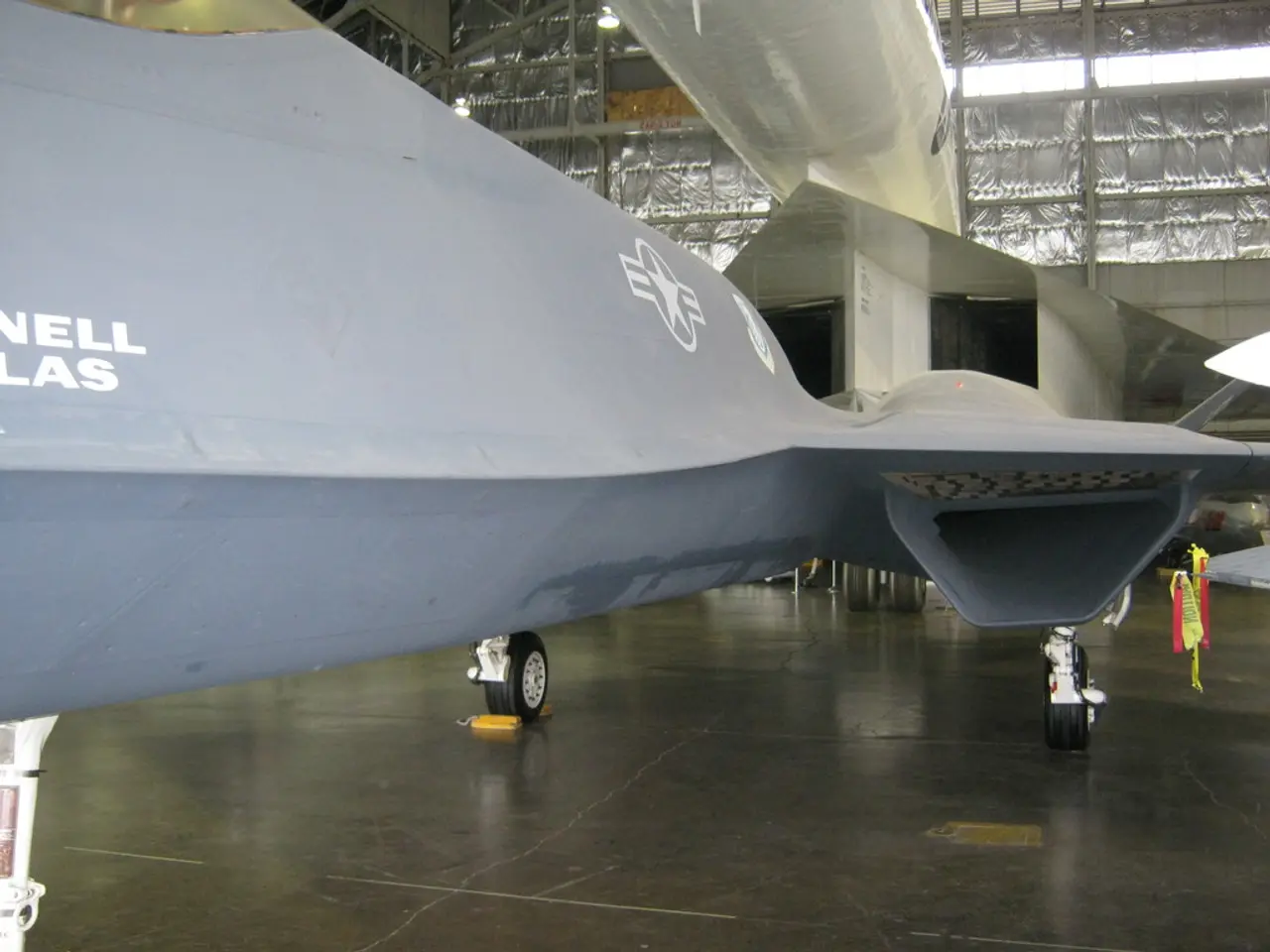Capitalizing on DAL's Earnings with a Strip-down Naked Put Strategy, Leveraging Market Volatility
In the world of options trading, selling put options on Delta Airlines (DAL) before their earnings announcement can be a strategic approach to capitalizing on volatility. This strategy offers a defined risk and a capped potential return, structured by option premium and stock price performance relative to the put strike price.
The primary reason for this strategy is the elevated implied volatility associated with earnings reports. Traders who are bullish or neutral on DAL can benefit from this increased volatility leading up to the earnings report. Earnings reports can trigger significant price movements, resulting in an increase in option premiums.
By selling a DAL put option, you receive an option premium that reduces your effective cost basis. For example, one described scenario shows the effective net cost of the position at $47.09, which is about 7.41% below the closing stock price prior to earnings. If the DAL stock price remains above around $48 at the put option's expiration after earnings, the put expires worthless, and you keep the entire premium. This can yield about a 1.9% return on capital at risk in a short timeframe, which is attractive given the earnings volatility.
However, the risk in selling a put before earnings is substantial if the stock price falls below the strike price, forcing you to buy DAL shares at a higher strike price than market value. For instance, if the stock drops sharply due to a disappointing earnings report or market reaction—as seen when DAL missed earnings estimates significantly last quarter (reporting $0.46 EPS vs. expected $0.84)—you could incur a large loss. The stock has shown downside volatility following earnings misses, with a 29% decline from its peak earlier this year.
The put seller’s maximum loss is effectively the strike price minus the premium received if DAL falls to zero, though such an extreme scenario is unlikely. Still, the stock's beta of 1.49 indicates above-average volatility.
Other considerations for this strategy include the options market showing increased put activity on DAL, reflecting bearish sentiment or hedging ahead of earnings, which increases premium but also signals elevated risk. The trade can benefit from the volatility increase ahead of earnings, as option premiums tend to rise, but this also means implied volatility may sharply drop post-earnings, exposing sellers to rapid premium erosion if the stock moves unexpectedly.
In summary, selling a put option on DAL before earnings can generate modest income while benefiting from volatility, but the risk of assignment and large losses if earnings disappoint is significant. This strategy suits traders who are moderately bullish or neutral on DAL and can tolerate the risk of stock ownership at the strike price. However, options are risky, and investors can lose 100% of their investment. This article is for educational purposes only and not a trade recommendation. Always do your own due diligence and consult your financial advisor before making any investment decisions.
Notably, the implied volatility for the expiration immediately after Delta Airlines' earnings is very high, at 68.88%, compared to longer-term options with volatility around 45-50%. If the options expire worthless, the seller keeps the entire premium as profit. By selling the put option before the announcement, traders aim to capitalize on the inflated premium.
The table below shows other potential put selling candidates on Delta Airlines for the July 11 expiration. Of the 21 analysts covering Delta Airlines, 19 have a Strong Buy rating and 2 have a Hold rating. Conservative investors may consider buying a further out-of-the-money put to reduce the risk and capital requirements, essentially turning the trade into a bull put spread.
Delta Airlines' stock is currently 7.41% below its Friday closing price. If DAL falls below the put option's strike price, the seller may be obligated to buy DAL shares at a higher price than the current market value. After the earnings announcement, implied volatility tends to drop significantly, reducing option premiums.
In conclusion, selling a Delta Airlines put option before their earnings announcement can potentially generate income while taking advantage of heightened volatility. However, it is crucial to understand the risks involved and consider your investment strategy carefully before making any decisions.
Traders who are neutral on Delta Airlines (DAL) can leverage technology to engage in investing strategies like selling put options before their earnings announcements, capitalizing on rising option premiums due to increased volatility. However, the substantial risk in selling a put before earnings could result in large losses if the stock price falls below the strike price, as seen in extreme cases when DAL missed earnings estimates significantly and its stock dropped sharply.




